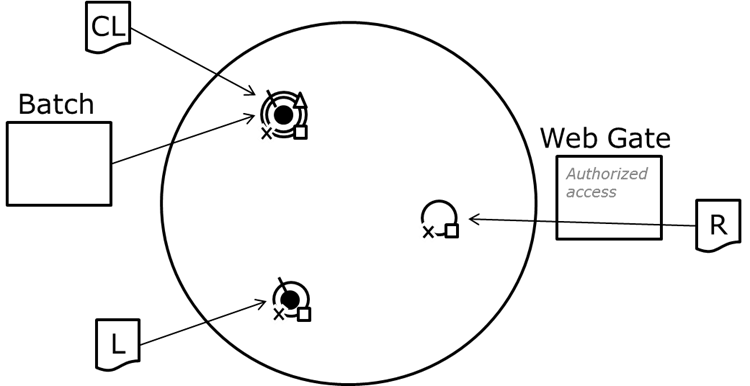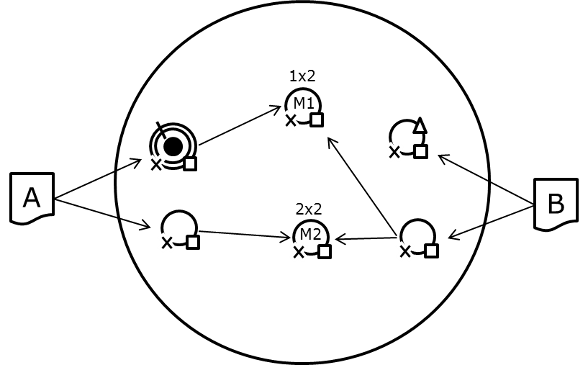The license used for MoBlo articles is CC BY-ND 4.0
3. Global Architecture (GA)
When population is defined, a global architecture needs to be defined. This architecture allows defining how each application interacts with the BlockChain. It allows then to explicitly present external services to implement.
3.1. Architecture elements
See below the elements to define the global architecture.
| Design | Description |
|---|---|
 |
BlockChain : Representation of the BlockChain grouping together all the nodes. |
 |
External Service : Representation of an external service that needs to access to information. |
 |
Application : Application used by someone of the population. |
 |
Link : Link between the nodes and the population. |
3.2. Library use case GA
In the Library use case, the libraries have an interest to be directly connected to the BlockChain.
Readers don’t have to install or configure anything to use the system. Then a Web Gate has to be implemented to let them use the service. Another reason of the gate is the lack of interest for Readers to possess all the data. Regarding Population Map, Others don’t have any right to connect to the BlockChain, and then the Web Gate needs to have a restricted access.
In complement of the Population Map, batches are necessary to create and send delay-related mail to Readers for example or manage the books to send from a library to another one.

Figure 3-1 – GA - Library
The figure represents the 3 nodes with rights inside the BlockChain. The interfaces of Central Library (CL) and Libraries (L) are directly connected to the BlockChain. Readers use a Web Gate to communicate with the BlockChain. Batches are using the Central Library’s address to access to the BlockChain.
3.3. Forum use case GA
The goal of the Forum is to discard all the web tools. Except to send and receive information in using transactions, there are no specific cases to identify. The goal of the forum which is a wall of publications is to maintain it completely open to everyone.

Figure 3-2 - GA - Forum
3.4. Particular case: Batch & SmartContract
A Batch is considered like an external service. It is located on a device and it uses an address present in a wallet. The wallet is owned by an actor of the BlockChain who can be distinctly identified, the address can be a multi-Signature address.

Figure 3-3 - GA - Batch
A SmartContract is a script in the middle of the BlockChain. Publish a SmartContract in the BlockChain returns the address of the SmartContract in the BlockChain. A SmartContract can be represented like a simple address with a label to indicate it is a SmartContract.

Figure 3-4 - GA - SmartContract
Notice that Global Architecture is done to only represent the architecture. The content of the Batch or the SmartContract has not to be defined by this diagram.
3.4. Particular case: Multi-Signature
In the particular of multiSig addresses the Global Architecture allows to define explicitly the related pub keys.

Figure 3-5 - GA - MultiSig
In the figure Alice uses one address with one multiSig address (M1) and her other address with the other multiSig address (M2).
Labels are added to the multiSig addresses to distinguish them later just in using this label.
3.6. Particular case: Channels
A few BlockChains define Channels like closed parts of a BlockChain. Man can give special rights to users in a channel and other rights in another channel. Never a Channel can be inclued in another one. In Global Architecture, it can be then represented like different BlockChain, each BlockChain with its own rights.